
-
Find the right food for your petTake this quiz to see which food may be the best for your furry friend.Find the right food for your petTake this quiz to see which food may be the best for your furry friend.Featured products
 Hill's Science Diet Adult Oral Care Chicken, Brown Rice & Barley Recipe Dog Food
Hill's Science Diet Adult Oral Care Chicken, Brown Rice & Barley Recipe Dog FoodClinically proven kibble technology to reduce plaque & tartar build-up
Shop Now Adult Small & Mini Lamb Meal & Brown Rice Recipe Dog Food
Adult Small & Mini Lamb Meal & Brown Rice Recipe Dog FoodFor the faster metabolism of Small & Mini dogs
Shop Now Adult 7+ Small & Mini Chicken & Brown Rice Recipe Dog Food
Adult 7+ Small & Mini Chicken & Brown Rice Recipe Dog FoodFor the unique nutritional needs of mature Small & Mini dogs
Shop NowFeatured products Adult Indoor Chicken Recipe Cat Food
Adult Indoor Chicken Recipe Cat FoodSupports energy level and beautiful fur in indoor cats
Shop Now Hill's Science Diet Adult Sensitive Stomach & Skin Dog Food
Hill's Science Diet Adult Sensitive Stomach & Skin Dog FoodHighly digestible recipe, gentle on stomachs. Nourishes skin & promotes a lustrous coat
Shop Now Adult Urinary Hairball Control Chicken & Rice Recipe Cat Food
Adult Urinary Hairball Control Chicken & Rice Recipe Cat FoodActively supports the health of the whole urinary system
Shop Now -
Featured articles
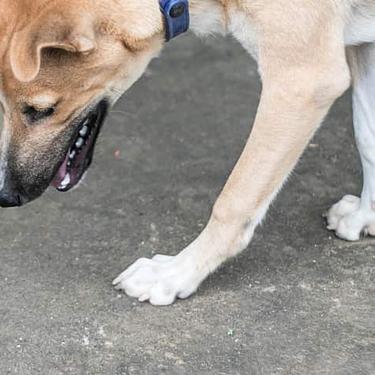 My Pet Ate a Lizard — What Should I Do?
My Pet Ate a Lizard — What Should I Do?Learn what to do if your pet eats a lizard, including whether they can be toxic and symptoms to keep an eye on when they've swallowed one.
Read More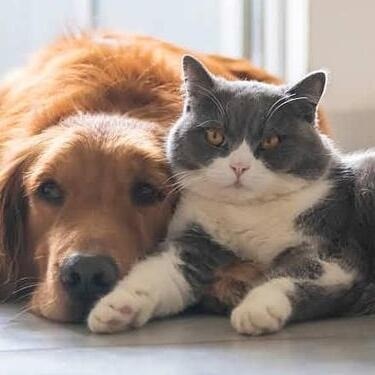 Easy DIY Dog & Cat Toys: Nine of Our Favorites
Easy DIY Dog & Cat Toys: Nine of Our FavoritesBrowse this comprehensive guide for several of our favorite DIY dog and cat toys that are sure to put a little pep in your pet's step.
Read More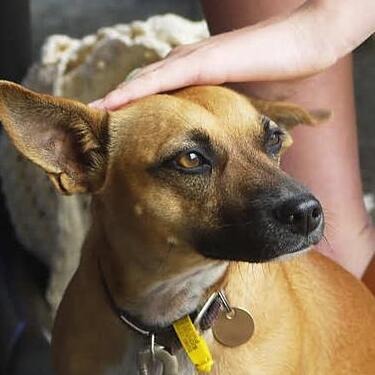 15 Pet-Friendly Cities Ideal for a US Road Trip
15 Pet-Friendly Cities Ideal for a US Road TripCheck out our list of pet-friendly U.S. cities that are excellent travel options, offering off-leash dog parks and pet-friendly restaurants & hotels.
Read More -


After living with cats for a while, most pet parents no longer question many of the more common weird behaviors that our pets exhibit (chirping at birds, anyone?). But what about actions like walking all over you? Or standing on you right when you're trying to get some sleep? Read on to learn why this cat behavior means you're more than just part of the furniture.
Why Does My Cat Walk on Me?
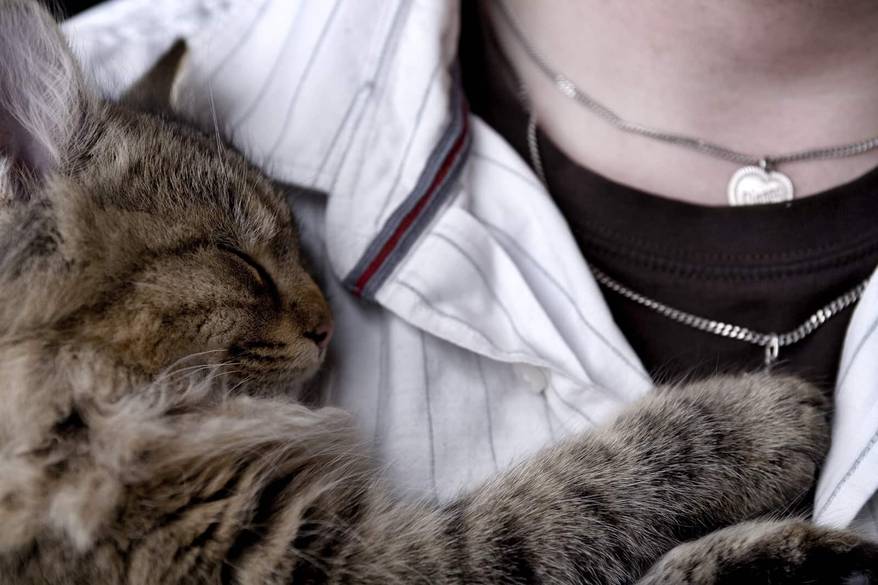
You may think that the number one reason your cat likes to walk on you is because she can, and you wouldn't be too far off the mark. Most often, standing or walking on you is a precursor to her ultimate goal: staying warm.
This especially is true for kittens who are searching for a substitute for their mother. Young kitties need to stay warm to stay healthy, and they instinctively search for the comfort of a trusted caretaker who will keep them safe. Domestic cats retain many of their kitten instincts, and that means they seek the safest spot in the house: with their cat parent. Your body heat gives your cat the security she craves.
Basically, your feline friend sees you as one big cushion she can relax on. As Chewy puts it, "your lap is a cat bed." Much as she does with a pile of blankets, a pillow or the couch, your kitty needs to make sure she chooses the perfect napping spot, and walking all over you fulfills this goal.
The act of walking all over you is closely related to the need to knead. Cats knead instinctively, often from kittenhood to adulthood. Although no one can say with absolute certainty why, many experts believe cats "make biscuits" because they are replicating the attentions of their cat mom.
"Because the pads of your cat's paws contain scent glands, her kneading emits her own distinctive scent, discernible by other cats or pets but not by the human nose," explain Animal Planet. "In a subtle manner, she's signaling that this is her own spot, and that other cats can just go knead somewhere else." In other words, when your cat tramples you, she's not only looking for a comfy sleeping spot, she's claiming her territory.


Tasty Tips
Why Does My Cat Stand on Me While I'm in Bed?
You may notice that your cat tends to stand on you at specific times of the day, such as when you've just settled down on the couch after a big dinner, or when you've just gotten under the bed covers after a long day, or when it's 3 o'clock in the morning. Basically, your cat wants your attention, and she wants it now.
Recognizing that you'll be distracted by other things, such as the TV, another person or sleep, your fur baby knows that you can't ignore her if she stands on your torso and, in many cases, stares directly into your eyes. (You know the look — as if she's trying to put you into a trance.) She's probably hoping that this maneuver will lead to a bedtime snack, a few extra pets or a snuggle. Or all of the above.
How Can I Stop My Cat from Standing on Me?
If you aren't comfortable with being a human cat bed, there are a few ways you can gently encourage her to stop, or at least cut down on how often it happens.
One way you can reduce this behavior is to gently remove your kitty from the undesired spot and place her next to you, or even on the ground. You should never yell at your cat or discipline her; rather, be patient, kind and persistent.
You also can divert her attention from you and toward her very own sleeping nook. Creating a DIY cat bed that appeals to your kitty's love of soft textures and security is a terrific way to get her off your abdomen and into a cozy, cat-approved space.
Keep this important mantra in mind whenever your kitty displays this kind of behavior: "Why does my cat walk on me? Why does my cat stand on me? Because she loves me."
Your furry friend gets up in your business because next to her loving pet parent is exactly where she wants to be. Remembering this will give you a better understanding of how your cat shows her affection.


One of our staff authors prepared this article for you
Related products
Related articles
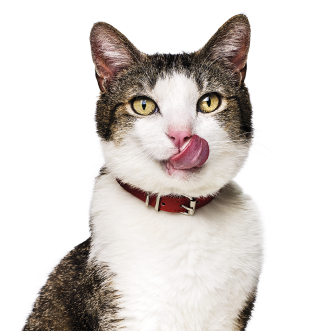
Put your cat on a diet without them knowing
Our low calorie formula helps you control your cat's weight. It's packed with high-quality protein for building lean muscles, and made with purposeful ingredients for a flavorful, nutritious meal. Clinically proven antioxidants, Vitamin C+E, help promote a healthy immune system.
Put your cat on a diet without them knowing
Our low calorie formula helps you control your cat's weight. It's packed with high-quality protein for building lean muscles, and made with purposeful ingredients for a flavorful, nutritious meal. Clinically proven antioxidants, Vitamin C+E, help promote a healthy immune system.

